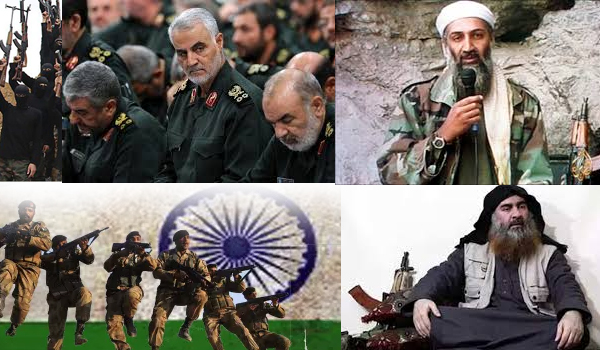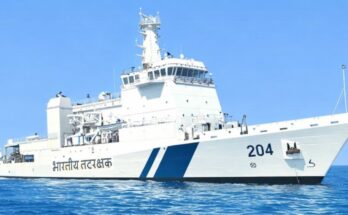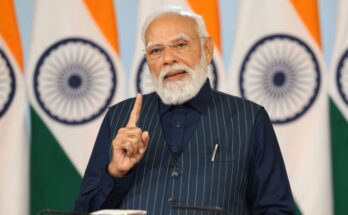The elimination of General Qasem Suleimani heading Al Quds Force of Iran’s Revolutionary Guards Corps in an American drone attack at Baghdad, draws a parallel with the earlier killings of Abu Bakar al Baghdadi, the chief of ISIS in a raid by US Special Forces in Syria last year and of Al Qaeda chief Osama bin Laden in a SEALs operation at Abottabad in Pakistan way back in 2011.
These three militant leaders termed by the US as ‘International Terrorists’ represented Islamic radicals who had declared the Americans as their sworn enemy and engaged in a no holds barred ‘proxy war’ against the US.
They belonged to the two different streams in Islam — Sunnis and Shias — that had produced extremists wedded to taking on the US-led West for political, ideological and historical reasons.
It began with the Emirate of Afghanistan under the Al Qaeda — Taliban leadership — installed by Pakistan in Kabul in 1996 — showing its fangs against the US — its subsequent ouster by the latter in fact laid the turf for the 9/11 attack.
In the ‘war on terror’ that followed under the US-led ‘world coalition’ against the global terror of Islamic radicals, the Pak-Afghan belt swayed by Al Qaeda-Taliban axis and the Syria-Iraq region dominated by Islamic State of Iraq and Levant (ISIS) emerged as the battlegrounds of this combat.
The Sunni extremists of the Al Qaeda and IS carried the historical memory of the 19th century Jehad that the Wahhabis had carried out against the Western encroachment on ‘Muslim lands’. They had given a call for restoration of the Islamic fundamentals of the times of the Pious Caliphs which, they contended, had been allowed to get ‘diluted’ in the mix of un-Islamic practices.
In the post-revolution Shiite Iran, the Ayatollahs similarly enforced the values of Caliph Ali that among other things intrinsically glorified the ‘virtue’ of poverty and detested what would become the present day capitalism.
At the same time, however, the origin of Shiism in the Kharijite revolt against Ali had produced an irreversible mutual hatred between the extremists of the two sects that is reflected in their current political relationship as well. Sunni Islamic radicals are anti-West but they also go after the Shias wherever they can find them — reports coming in regularly of Taliban attacking Shias in Pak-Afghan region prove the point.
This all makes it easy to understand that the geo-politics of West Asia is largely conditioned by the ascendancy of radical Islam in the Muslim world in the post-Cold War era.
Pakistan’s collaboration with Taliban in Afghanistan after the withdrawal of Soviet troops from that country, shelter provided to Al Qaeda leadership by Pakistan on its own soil and the dubious role of Pakistan in the ‘war on terror’ should be mentioned as the principal reasons why this rise of radical forces became possible in the first place.
The US attack on Saddam Hussain heading a Baathist dispensation in Iraq in 2003 made Syria-Iraq region — with its anti-US regimes — a second theatre of radicals where ISIS would come up under al-Zarkawi, who had earlier been active in Afghanistan. ISIS attracted many combatants from the Pak-Afghan belt of Al Qaeda as well.
Shiite Iran under Ayatollahs — bracketed by US President George Bush with Iraq in his ‘axis of evil’ statement — was independently rising as a force against both US and Israel with the militant Hazbollah under its patronage extending its wings in Lebanon and Iraq.
On the other hand a number of Muslim and Arab countries under the umbrella of Saudi-chaired Organisation of Islamic Conference(OIC) — though running a harsh Islamic regime — remained on the right side of the US.
The picture in the Muslim world thus presents a three-way divide with radical Shiites and Sunnis directing their guns against US and also against each other and a significant cluster of Muslim states politically aligning themselves with America.
India could be a mere watcher of the scene but for the fact that Pakistan — a prime mover of OIC — has been conducting a ‘proxy war’ against us using cross border terrorism as its instrument and mobilising both radicals and other Islamic outfits against India for that purpose.
India has stakes in the developments in West Asia, including the Gulf for both economic and security reasons. India’s foreign policy has been successful in getting US under President Donald Trump to abandon the artificial divide between ‘good terrorists’ and ‘bad terrorists’ that Americans earlier made at the cost of Indian interests.
The challenge for India is to keep Indo-US friendship at a level where the American policy does not hyphenate India with Pakistan again and to build bilateral relations further with countries like Saudi Arabia, Iran and Israel independently of one another — and also un-linked from the ascendant Indo-US friendship.
Under Prime Minister Narendra Modi’s leadership India is following this policy to our advantage — what is helping in this is a certain confidence that the Prime Minister brings to bear on his projection of India as a promotor of international peace — the voice of sanity and a balancing power.
Today the broad picture is that even as the prospects of an open warfare receded post-Cold War, the world transited to an era of proxy wars, cross border conflicts and ‘covert’ offensives. Conventional battle has given way to the ‘asymmetric warfare’ in which terrorist attacks on military and non-military targets are resorted to as a cost-effective means of wearing down a superior enemy.
Gen Qasem Suleimani apparently had a free run in Iraq planning such operations against the US bases in that country and the drone strike to take him out was ordered by President Trump himself after pro-Iran militants tried to lay seize of the US Embassy in Baghdad.
It may be mentioned that terrorists are indoctrinated in the ’cause’ they were working for and a strong motivation for standing for the cause is provided by the war cry of Jehad that Islamic radicals and other extremists have raised — making the Muslim world a festering home ground for faith-based terror in the process.
India has been at the receiving end of terror attacks carried out by Pak ISI-instigated militant outfits like Lashkar-e-Taiba, Jaish e Mohammad and Al Qaeda in Indian Subcontinent(AQIS).
Indian diplomacy should work on the democratic world to get it to denounce the medievalism that used religion as a tool of war and should likewise, persuade OIC chaired by Saudi Arabia to take a clear stand against countries invoking Jehad for sorting out political disputes in today’s times.
India has the second largest Muslim population in the world and has to work for this outcome considering the fact that Pakistan had become a rogue state providing safe haven to terror outfits having linkages across the Islamic spectrum.
India cannot question the right of the US to neutralise leaders of terror outfits for America’s own security and defence but it can promote wise counsel for peaceful resolutions rooted in a declared rejection of terrorist violence as an instrument of combat.
Strategic analysts are looking, from their own angles, at the possible turn of events after the assassination of the Iranian General — carried out by the US in what was a security operation against a leading terrorist known to be the kingpin of covert attacks on Americans.
Iran has threatened retaliation on a big scale but has not gone beyond firing a few missiles on a US base in Iraq so far. It is cognisant of a crippling military response from the US — if it crossed a line.
It is significant that Iran is anti-US and pro-Syria politically — which is reminiscent of the Cold War divide — while it considers ISIS as an enemy in terms of religious contradiction.
General Suleimani was reportedly acting like an advisor to President Bashar al Assad — in parallel to Russian approach of friendship towards Syria.
Iran however, has a civilisational past and it should handle its ideological and political differences with others without getting entangled into a warfare that invoked religion for its sustenance.
India has to watch out for the impact of a deteriorating Iran-US relationship on the world at large and retrieve its own economic interests in the region.
India now has a say on the world stage and our diplomacy should be able to put into play India’s balancing role — helped by its non-aligned outlook.




